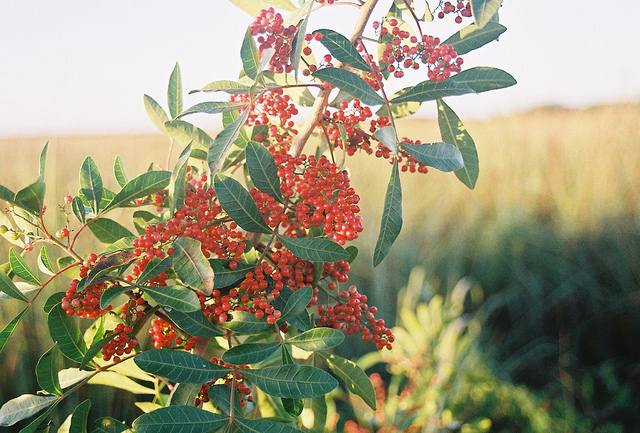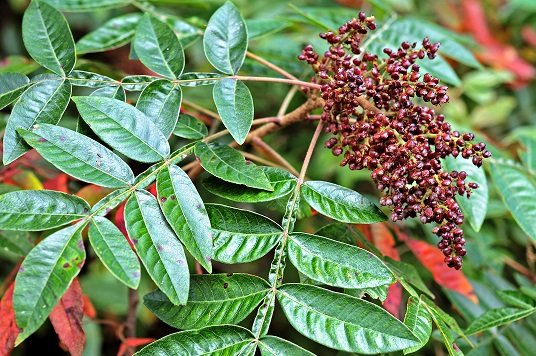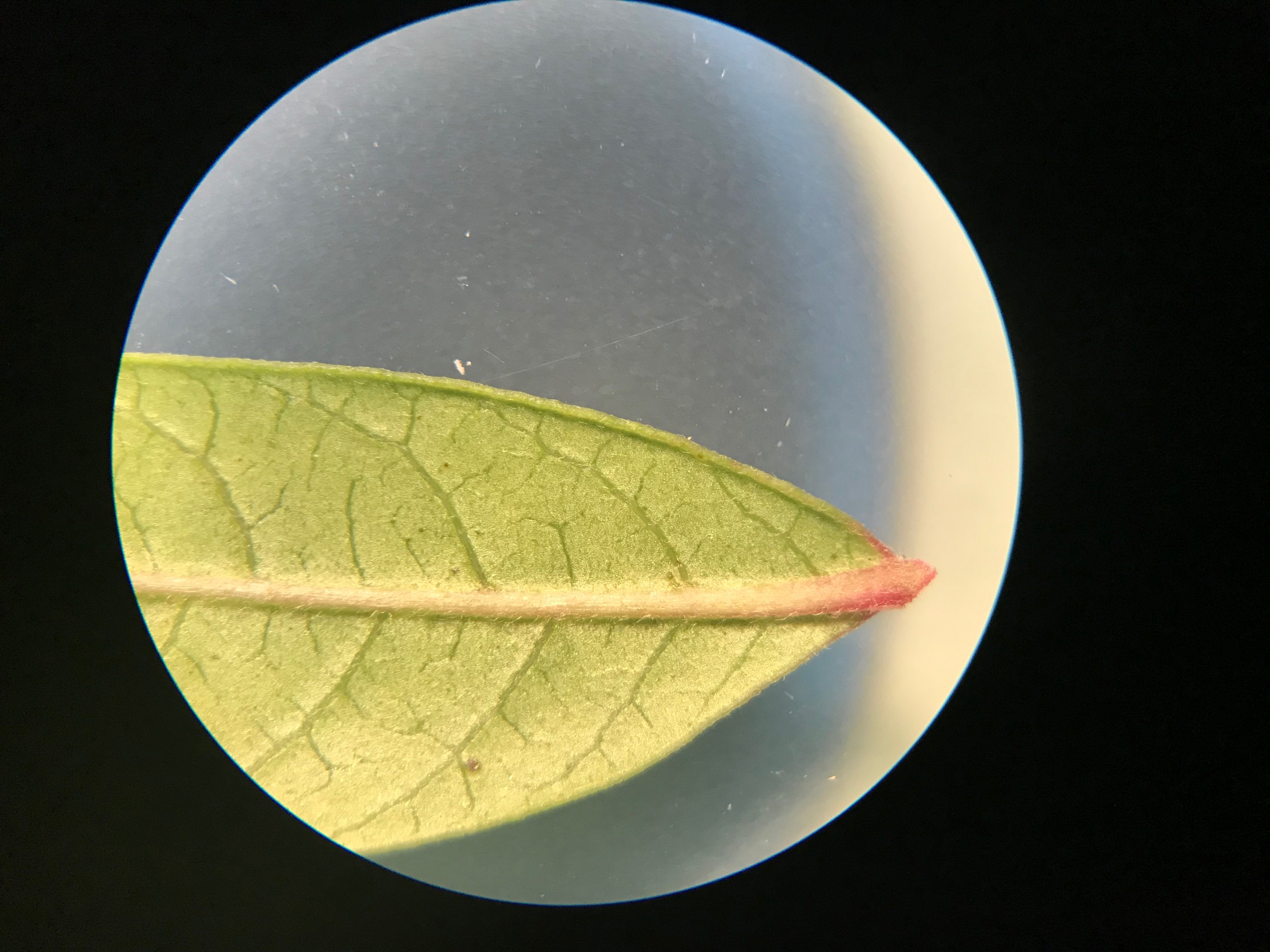As an educator I shouldn’t do this, but I’m going to assume most of you have heard about or are familiar with the Brazilian Pepper-Tree (Schinus terebinthifolius). This plant has a super bad reputation because of its very invasive nature. it’s known for shading out and displacing native plants and animals. The Brazilian pepper-tree was originally brought in as an ornamental for its bright red berries and vibrant green foliage. But the plant we once adored, we now…well…don’t. I’m not here to hate on Brazilian Pepper-trees though. Instead I want to ensure we aren’t confusing these plants with a similar looking plant called the winged sumac (Rhus copallinum).


If you’re trying to keep your yard free of invasive species and support our native plants, it’s important to know how to tell a winged sumac from a Brazilian pepper-tree. Both plants produce a cluster of beautiful red fruit and have compound leaves, which means a single leaf that is divided into individual leaflets. The fruit of both of these species provide a valuable food source for wildlife during the winter months. Wild turkey, white-tailed deer, and many songbirds can be seen munching on these plants. The bark of winged sumac can also be eaten by fox squirrels and cottontail rabbits!
Okay so here’s what to look for to tell them apart…
Fruit
While they both produce a cluster of small red drupes (fleshy fruit with thin skin and a central stone containing the seed), the fruit of Brazilian pepper-trees is a shiny, glossy, bright red, while the fruit of winged sumac is a deep red, but more dull due to the presence of fine hairs on the outside of the fruit. You can think of it like the finishing on picture prints. Brazilian pepper-tree fruit would have a glossy finish whereas the winged sumac fruit would have a matte finish. As we know though, fruit isn’t always around and this can be difficult if you don’t have the fruit in-hand. It should also be noted that both of these plants are dioecious, having male and female flowers on separate plants, so fruit will only be present on the female plants.
Leaves

Here we might be able to note some other differences between these two species. The mid vein (central vein) and lateral (side) veins on the leaflets of the Brazilian pepper-tree tend to be lighter in appearance, contrasting from the bright green leaves. While a lighter colored mid vein can be noted on winged sumac, the lateral veins tend to be discreet (not as obvious). You can also look at the petiole or leafstalk of the leaves on these plants.
Winged sumac gets its name from the winged leafstalk. Look for this extra foliage along the central part of the leaf, between all of the leaflets. This is usually absent on the Brazilian pepper-tree, though some plants can have a slightly winged midrib. If you note the margins or edge of the leaflets, they are typically toothed on the Brazilian pepper-tree and entire or smooth on the winged sumac, though they can also be toothed. I know, I’m not really helping you here :-O Okay, and here is one more tip (pun kind of intended)…on average there are more leaflets on winged sumac (9-23) than there are on Brazilian pepper-trees (3-11, though usually 7-9). You can see a great example of that in the picture comparison above.

One other thing to note is the color of the leaf on the top and underside. Both sides of the leaf on the Brazilian pepper-tree will be similar in color, but the winged sumac will have noticeably different colors with dark green above and a pale green below. If you have a hand lens available, you can also note fine hairs on the underside of the leaflets on winged sumac. Oh, and winged sumac is deciduous, losing its leaves in the fall, but the Brazilian pepper-tree is an evergreen.
Flowers

Lastly, if you can note the time of year the plant flowers, this can be helpful. Brazilian-pepper trees flower between September and November with fruits usually maturing in December, just in time for the holidays. Winged sumac flowers earlier in the year between July and September with fruit appearing in the fall and lasting through most of the winter season. Fruit of winged sumac will often persist even after the leaves have fallen. Flower appearance is similar, though flowers of Brazilian pepper-trees are noted to be whiter in appearance than the yellowish or greenish to white color of winged sumac flowers.
You can check out some of the sources below to learn more. I can only fit so much in my blogs 😉
If you enjoyed this series and would like to read more about commonly confused plants and animals in Florida, you can find more here:
https://blogs.ifas.ufl.edu/global/tag/commonly-confused/
Sources: https://plants.usda.gov/factsheet/pdf/fs_rhco.pdf http://sfrc.ufl.edu/extension/4h/plants/Winged_sumac/index.html https://plants.ifas.ufl.edu/plant-directory/schinus-terebinthifolia/ https://plants.ifas.ufl.edu/wp-content/uploads/files/caip/inv_plant_man_plan_pdf/brazilian_pepper_PP.pdf http://edis.ifas.ufl.edu/aa219 http://sfrc.ufl.edu/extension/4h/trees/Brazilian_pepper/index.html “Forest Plants of the Southeast and Their Wildlife Uses” by James H. Miller & Karl V. Miller.
 0
0
